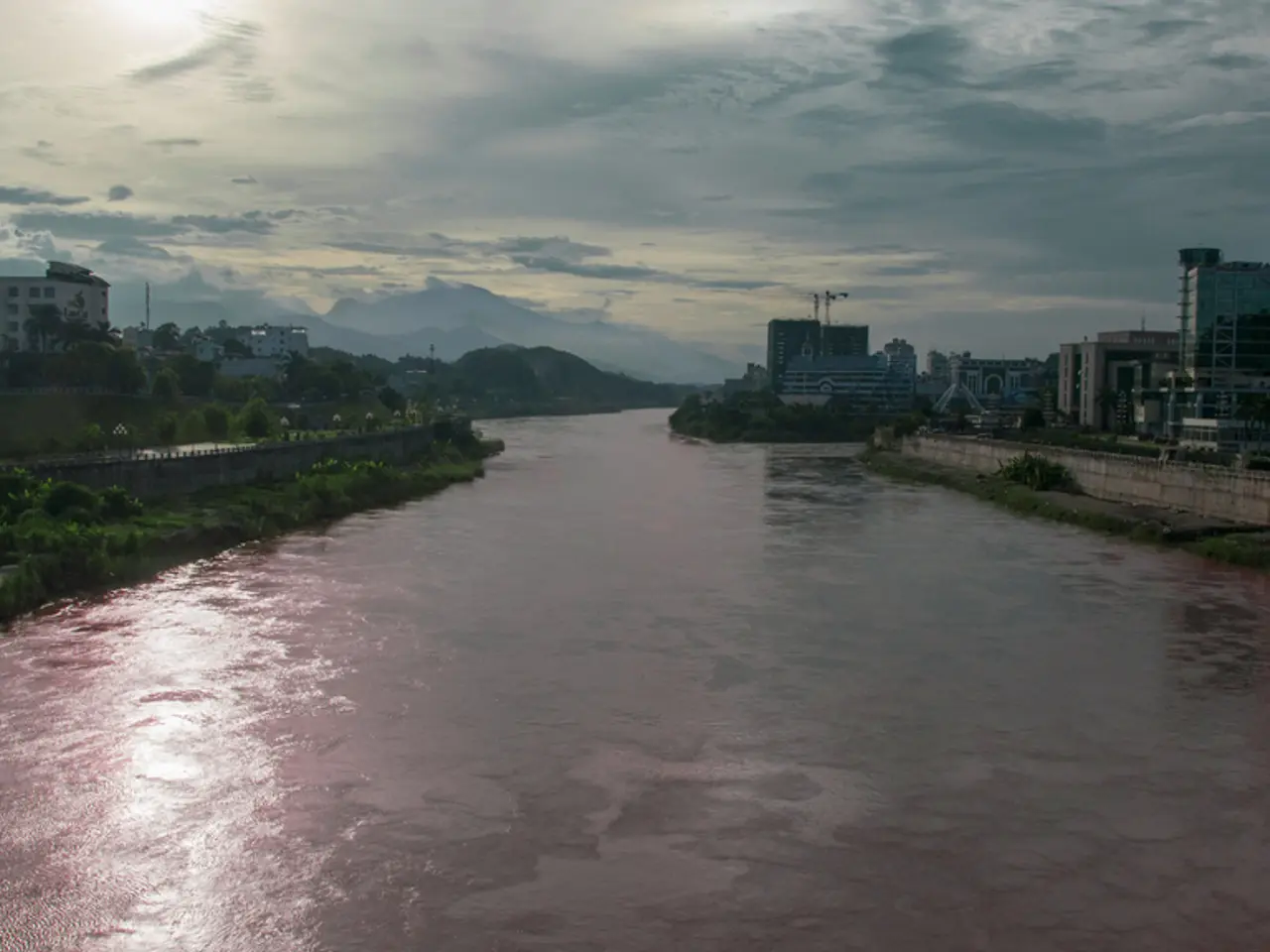Rural areas of Bangladesh are at risk for sudden, heavy flooding incidents
Flooding Threatens Bangladesh as Rivers Near Danger Mark
Heavy rainfall in the upstream regions covering parts of Nepal, Bhutan, and India has led to significant water inflow, causing severe flood threats in Bangladesh. The Teesta, Dharla, and Dudhkumar rivers are predicted to surpass their danger marks over the next two days, potentially flooding low-lying areas in Lalmonirhat, Nilphamari, Rangpur, and Kurigram districts.
The flood conditions have already resulted in the closure of thirteen government primary schools in two unions. In addition, the Padma River is flowing just one centimetre below the danger level at Daulatpur in Kushtia, with large areas in the region already flooded.
The flooding has also affected 40,000 people in Ramkrishnapur and Chilmari unions, who are currently stranded due to flooding in Daulatpur upazila. The Ganges River is expected to reach its warning level within the next 24 hours, further exacerbating the situation.
The Brahmaputra river system, which includes the Teesta, Dharla, and Dudhkumar, is predicted to keep swelling over the next three days, reaching warning levels at many points. The Mahananda, Upper Atrai, Jamuneswari, Tangon, Punorbhoba, Ghaghat, and Karatoa might also swell over the next three days, eventually reaching their warning points. The Someswari, Bhugai, and Kangsha, rivers in the Meghna basin, are predicted to flow at their warning levels over the next three days.
Thousands of people in low-lying remote areas along the Padma River are currently stranded due to the flood waters. A low pressure area is forecast to form over the Bay of Bengal tomorrow, possibly increasing rainfall inside Bangladesh. The upstream regions where the heavy rainfall is occurring include the world's wettest place and one of the largest mountain ranges.
The government and disaster response teams are actively engaged in rescue operations and relief distribution. The forecast indicates that flood conditions may persist if the monsoon rains continue, as water levels are receding slowly. The continuation of the monsoon, along with the heavy rains upstream, contribute to sustained flooding threats downstream in Bangladesh.
To mitigate the impact and enhance resilience, international support is being provided, including a $270 million World Bank project focused on flood recovery and preparedness. This project involves construction and rehabilitation of flood shelters, roads, and climate-resilient infrastructure particularly in the eastern districts affected by flooding.
Local and international initiatives are also implementing flood protection measures such as floodwalls and community training to adapt to increasingly severe and sudden floods due to climate change, especially in vulnerable wetland regions like the Haor area. Special attention is being given to safeguarding vulnerable groups, including women of reproductive age, by reproductive health agencies providing training and support to prepare for floods and maintain access to healthcare during disasters.
In summary, the flood conditions in Bangladesh continue to pose a significant threat, particularly in the southeastern and northeastern districts. Millions of people are affected, with the death toll ranging between 23 and 67. The government and disaster response teams are actively engaged in rescue operations and relief distribution, while international support is being provided for recovery and flood resilience projects.
Climate change, exacerbated by heavy rainfall and snowmelt, is contributing to the swelling of environmental-science rivers in Bangladesh, such as the Teesta, Dharla, and Dudhkumar. Additionally, weather forecasting predicts that weather conditions in the upstream regions could worsen, potentially leading to further flooding and further threatening vulnerable communities.








